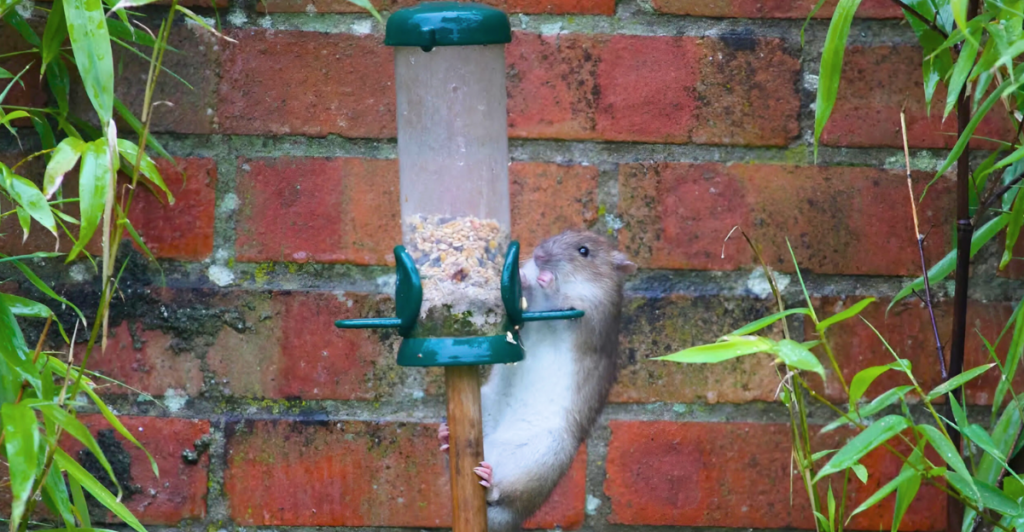
No one wants rats and wild critters taking over their yard—but all it takes is one neighbor leaving out food to attract a furry invasion. Whether it’s intentional feeding or just careless habits, these actions can quickly become a neighborhood problem. Here are 10 effective ways to stop your neighbor from feeding rats and other unwanted animals.
Why Critters Keep Coming Back

Rats, raccoons, and other animals don’t roam randomly—they settle where food is abundant and threats are minimal. Urban areas have become hotspots due to human behaviors like unsecured trash, outdoor feeding, and careless composting.
Even unintentional habits, like feeding stray cats or tossing bread in the yard, can create reliable feeding stations for pests. Once a rodent identifies an area as a food source, it quickly tells others through scent trails and pheromones.
While poisons and traps offer short-term relief, stopping the influx means changing how your neighborhood interacts with wildlife. Whether your neighbor is an animal lover or simply unaware, the following methods aim to redirect their habits without escalating tension or inviting conflict.
1. Gift Them Rat-Proof Bird Feeders

Rather than confronting your neighbor about their bird feeder, offer a clever workaround by gifting a rat-proof model. These specially designed feeders feature seed trays and catchers that prevent excess spillage, effectively cutting off unintended food supplies for rodents.
In cities like Chicago, modified feeders led to a 40% drop in reported rodent activity within community parks. It’s a subtle way to help them feed birds responsibly without accusing them directly. Many rat-proof feeders are marketed as “squirrel-proof,” which removes the stigma and adds a friendly spin to the solution.
This gesture can also open up a broader conversation about local wildlife and responsible practices. By choosing a non-confrontational approach, you encourage positive change while preserving neighborly goodwill. It’s a surprisingly effective mix of kindness and strategy, proving that sometimes the best way to solve a pest problem is with a gift box and a smile.
2. Use Ammonia-Based Deterrents in Key Zones

Ammonia replicates the scent of predator urine, making it an effective, non-lethal deterrent for rats and many wild animals. It can be used in spray form or soaked into cotton balls placed strategically around feeding areas, especially near fences, sheds, and garbage bins.
In multiple urban field tests, rodents avoided ammonia-treated areas entirely, showing signs of stress and relocating within days. The best part? Ammonia evaporates quickly and doesn’t leave harmful residues behind.
If your neighbor is an animal lover, explain how this solution keeps critters safe while encouraging them to move on naturally. It’s far less aggressive than poison, and its strong scent fades fast enough to avoid bothering humans.
3. Introduce Strobe Lighting as a Deterrent

Nocturnal pests like rats rely heavily on darkness and stillness to forage without fear. Break that comfort zone by installing motion-activated strobe lighting near your shared property line. Studies in industrial facilities found rat activity dropped by 70% in just two weeks after strobe lights were deployed.
The flickering light disrupts their ability to feel safe, pushing them to seek quieter, darker environments. If you’re hesitant to suggest this directly, install lights on your side of the yard facing the problem area—it’s perfectly legal and highly effective.
Modern solar-powered versions make installation easy and cost-efficient. This method is especially useful near compost bins, garages, and sheds where rats might nest. It’s a tech-savvy twist on pest control that blends low maintenance with high impact.
4. Install Ultrasonic Pest Repellent Devices Near Shared Zones

Ultrasonic devices offer a tech-forward solution to an old problem. These gadgets emit high-frequency sounds that drive away rodents without bothering pets or humans. Research shows that under controlled conditions, ultrasonic repellents can reduce rodent activity by up to 80%, especially when placed near feeding areas.
If you’re uncomfortable confronting your neighbor directly, install these devices near shared fences, sheds, or common green spaces. Some solar-powered models even combine ultrasonic noise with flashing LED lights, boosting effectiveness.
Since these devices are small and silent, they’re less likely to spark complaints or disputes. It’s an easy, modern method that works in the background, giving you more control over your property and encouraging critters to look elsewhere for their next meal.
5. Educate About Rodent-Resistant Composting Practices

If done improperly, composting can be a magnet for rats. The problem isn’t composting itself—it’s the way food scraps are stored and processed. Suggest switching to rodent-resistant compost bins with sealed lids, elevated bases, and no exposed access points. These containers block scent trails and entryways, drastically reducing pest interest.
A recent study from the University of California Cooperative Extension found that using animal-proof compost bins decreased rodent sightings by over 50% in participating neighborhoods. You might consider sharing a helpful flyer or even hosting a small backyard workshop on eco-friendly composting.
Focus on the benefits: faster decomposition, fewer flies, and less odor. Framing it as an upgrade rather than a correction makes the conversation more palatable.
6. Advocate for Community Pest Control Days

Rodent control becomes exponentially more effective when the whole community takes action together. Instead of targeting one neighbor, suggest organizing a community “Clean & Control Day.” These events bring residents together to clean up debris, secure trash bins, and implement pest deterrents.
Studies from public health departments show that coordinated efforts reduce rodent populations far more effectively than isolated action. Frame it as a community beautification or safety initiative, not just a pest campaign.
These days can also be great for sharing deterrents like strobe lights, ammonia solutions, or plant-based barriers. The key is unity—rats thrive when only a few homes slip up. But when everyone takes part, the message is clear: this is no longer a hospitable place for critters to settle.
7. Plant Natural Rodent-Repelling Gardens

Some of the best pest control methods are also the prettiest. Encourage your neighbor to plant mint, lavender, marigolds, and daffodils—plants known for repelling rodents with their strong scents. You could frame it as a gardening upgrade or even gift them a few starter pots.
A rodent-repelling garden not only smells great and adds curb appeal, but it also creates a natural perimeter that discourages animals from approaching feeding spots. Urban gardeners in Detroit found that pest-resistant plantings significantly reduced sightings of rats and raccoons over one season.
These plants are also low-maintenance and pollinator-friendly, making them a win for bees and butterflies too. This subtle strategy beautifies the space while passively solving a problem, proving that sometimes the best pest control is also the most elegant.
8. Suggest Relocating Feeding Stations to Open, Exposed Spaces

Rats prefer sheltered, hidden areas where they can feed without risk. Use this knowledge to your advantage by suggesting that any outdoor feeding stations—bird feeders, pet bowls, or wildlife snacks—be moved to more exposed zones.
Studies have shown that rodents avoid open spaces where predators might spot them. If your neighbor insists on feeding animals, propose relocating these items to a well-lit, central yard area or elevated platform. It’s a low-conflict compromise that still respects their intentions while minimizing rodent appeal.
You might also share articles or videos on how certain feeder designs and placements can dramatically reduce mess and limit access to non-target animals. It’s a subtle behavior nudge that rethinks the layout without directly criticizing their choices.
9. Offer Incentives for Change Through Positive Reinforcement

When logic and subtle hints don’t work, a little motivation can go a long way. Offering small incentives—like free help with yard work, gardening supplies, or pest-proofing kits—can encourage your neighbor to shift their habits without feeling pressured.
Positive reinforcement has long been shown to be more effective than confrontation when it comes to behavior change. In behavioral psychology, this is known as the “carrot over stick” approach, and it’s especially useful in neighborhood dynamics.
One community in Florida successfully reduced backyard wildlife feeding by 60% after launching a “Clean Yard Challenge,” complete with small prizes and community recognition. You don’t need to start a campaign—but a simple offer of help, materials, or praise can create lasting results.
10. Leverage Local Health and Safety Regulations

If all else fails, the law may be on your side. Many cities have ordinances that prohibit feeding wildlife or engaging in behaviors that attract pests, including improper composting or unsecured garbage. Do a bit of local research and, if needed, gently inform your neighbor of the regulations.
Present it as a concern for public health—since rodents can spread diseases like leptospirosis and salmonella. A tactful way to start the conversation is by mentioning that you read about local fines or new enforcement measures in a community newsletter.
This allows you to introduce the issue without sounding accusatory. In some areas, you can also anonymously report pest-attracting behavior to local code enforcement or environmental health agencies. Legal accountability, when used respectfully, can be a powerful last resort—ensuring the problem is taken seriously while keeping things as civil as possible.
Explore more of our trending stories and hit Follow to keep them coming to your feed!

Don’t miss out on more stories like this! Hit the Follow button at the top of this article to stay updated with the latest news. Share your thoughts in the comments—we’d love to hear from you!







